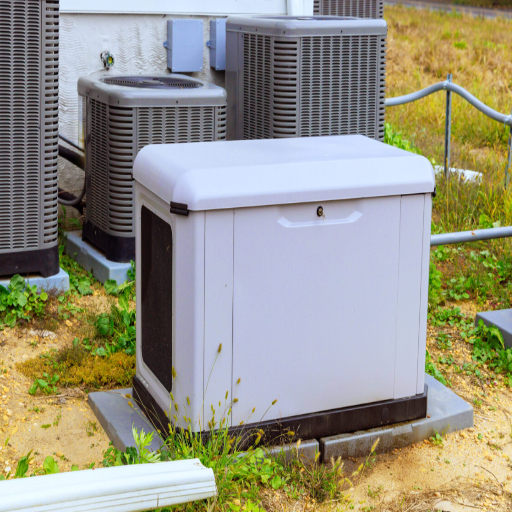Finding the right generator installer is a critical step in ensuring reliable, uninterrupted power for your home or business. This guide is designed to provide you with a comprehensive overview of what to look for when choosing a generator installation service, including factors such as expertise, certifications, customer reviews, and pricing. Whether you are preparing for unexpected power outages or need a backup system for critical operations, selecting a qualified and trustworthy installer is essential. By the end, you will have the necessary knowledge to make an informed decision.
How much does professional generator installation cost?
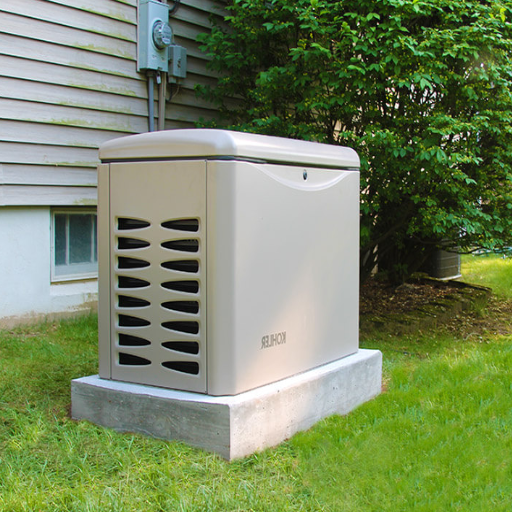
Understanding the costs associated with whole-house generator installation
The cost incurred for whole-house generator installation may differ greatly due to several essential drivers. Primarily, the cost relates to the size, capacity and type of the generator. Bigger generators with the ability to cover an entire house, particularly during long outages, tend to be more expensive than their smaller counterparts with partial load coverage capabilities. Equipment costs generally range between $3,000 and $15,000, or even higher, with variation based on the brand, features, and power metrics.
Another issue is how much the installation is going to cost. Installation services must be handled by a professional to guarantee the safe linking of the generator to the home’s electrical system which typically drives permeation costs. Normally, installation costs lie between $2,500-$7,500 but depend on the size and difficulty of the installation, so as local wage rates, including, but not limited to, electrical panel changes and fuel source conversion to either natural gas or propane.
In addition, site-based preparatory work influences the price. These factors include insulating and venting construction which can attract extra payments of about $500 to $1500. Don’t forget the local jurisdiction permitting fees and inspections, which usually gather between $100 and $500 or more and must also be considered.
When all factors are considered, the estimated cost of a whole-house generator ranges between $5,600 and $25,000, which includes the generator, the installation by a licensed professional, and related expenses. While the initial investment may be significant, a trustworthy backup power solution enhances the long-term value of your home, ensures functional operations, and lowers the negative impacts of an outage.
Factors affecting generator installation pricing
The pricing components for the installation of generators is multi-faceted and each component has a bearing on the interrelationship of the scope of work included and the overall estimation of cost. Some of the principal elements are as follows:
- Fuel and Power Type: The fuel type, such as natural gas, propane, or diesel, will impact the cost of installation. These generators are eased within environments of deployment of gas lines, however, such additions are cumbersome with propane and diesel systems as they necessitate additional storage tanks to augment material and labor costs. Natural gas is the cheapest option when it comes to fuel choice.
- Preparation of the Site: These costs can inflate where site conditions are difficult, for example, with the provision of the correct foundation with proper drainage and compliance with local building regulations. These features might be difficult to any rugged parts within tough spaces which might need more effort along with specialized equipment at an extra cost.
- Transfer Switch Integration: The lowest priced automatic transfer switches (ATS), which allow changes of power sources and power back in case of outage, do not have compatible generators. Less powerful consensus (ex 200 amps) are relatively branded with higher specification homes or electrical appliances.
- Electrical Changes: Changes and upgrades to the existing electrical systems like sub-panel installations or panel rewirings may be required to guarantee efficiency and safety compliance, which increases cost of installation.
- Permit and Inspection Fee: Additional costs are incurred as most localities require generator installations to get permits alongside inspecting the installations once completed.
- Distance from Fuel Source or Utility Connection: Material and labor costs of installation, such as piping, wiring, cand onduits, increase with the distance of the generator from the electrical panel or fuel source.
Each factor requires rigorous analysis to prepare precise estimates, taking into account factors like generator size and amps required, along with specific site issues, which are all comprehensively analyzed during the planning stage.
Comparing quotes from different generator installers
When analyzing bids from various generator installers, all indications and specifications for the site and generator must be the same to eliminate variation. The following are the things to consider:
- Generator size and capacity: Before anything, check if the installer’s proposal has the necessary kilowatt (kW) rating for your needs. This is established by the total load requirement determined from each appliance and system’s (essential ones included) wire or amp rating.
- Scope of the installation: Check whether the cost estimates for each quote include the required site work such as the excavation, concrete pad installation, and transfer switch mounting.
- Wiring and piping: The installer should remember the distance of the generator to the fuel supply, and electrical panel. Longer distances will need more materials and labor, and these should be captured in the quote.
- Fuel type and connections: Natural gas, propane, or diesel all impact the quotation in different ways so ensure this is adequately captured in the adjustments or upgrades made to the existing fuel lines scope of work.
- Permits and compliance: All scope estimates prepared must include ways and means towards obtaining the appropriate quotes as well as local building permits or zoning plans so they comply with the needed fees and costs.
- Warranty and Service Plans: Assess the scope and coverage periods of warranties as well as the scheduling of routine maintenance or service contracts.
The cost differences should be substantiated with precise technical details such as load computations, pipe diameters, breaker or transfer switch amperages, and adherence to the Electrical Code (NEC). The details of all these factors must be undertaken so that you obtain the best deal for your generator installation.
What are the steps involved in generator installation?
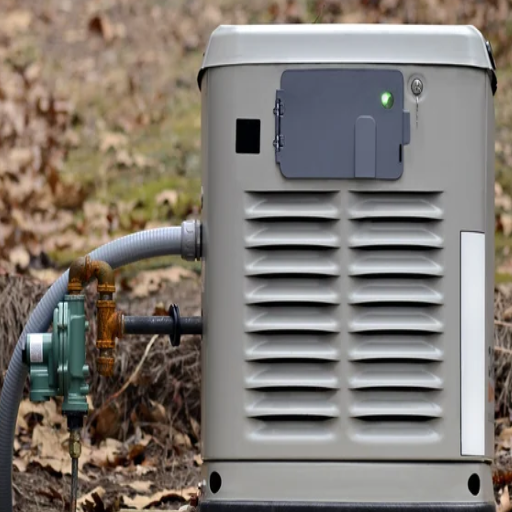
Site preparation and obtaining necessary permits
Before tank installation can be done, the site must be prepared first. The first step is to perform a site assessment where the optimal location for the generator will be determined. Tasks that need to be performed in this step include checking the adequacy of structural clearances, checking the ventilation of the area, and determining if the ground is stable enough to support the weight of the equipment. In addition, I also make sure that local zoning regulations as well as industry standards like NEC setbacks have been met. These standards have defined minimum distances that need to be maintained from combustibles, doors, windows, and other materials that can catch fire.
- Load: Recorded demand for electric power in kW or kVA for the generator outputs to be equal to or exceed the requirements.
- Conduit: Conduits of selected material and size by NEC provisions for specified and permitted power
- Breakers and switches: Components with given ratings are intended and capable of carrying the automatically disconnected load without overheating and tripping.
- Site Clearance Compliance: Minimum distance of 5 feet from egress points and 3 feet from combustibles.
Checking all these areas in detail makes certain that safety is not compromised while ensuring that operational efficiency is prompt.
Setting up fuel sources: natural gas or propane connections
Maintaining proper safety guidelines and technical details is crucial in propane or natural gas line installation.
- Sizing the Gas Line: Make sure the gas pipe is sized appropriately to meet the estimated BTUs/hour consumption. Lines that are too small in diameter can create a pressure loss which will cause an inadequate supply of fuel. Check gas pipe sizing charts and remember that the total length of the run, along with any flow-restricting fittings, must be considered.
- Regulation of the Pressure: Utilize a pressure regulating device to achieve the pinpoint specific psi that the equipment demands. The residential natural gas customer has a standard delivery pressure of approximately 0.25 to 0.5 psi (7 to 14 inches water column), while propane usually does and can operate around 10 psi.
- Material for Connection: Use approved materials like flexible gas connectors which are of various designs, or rigid black pipe which is more commonly used with the fuel type selected. The gas fittings must be properly sealed with thread sealant or Teflon tape designed for gas lines.
- Testing for Leaks: Conduct a pressure test on the system and check each connection for leaks by way of a soapy water solution prior to activating the system.
- Ventilation and Clearance: Ensure that ventilation is adequate based on the fuel type used to prevent the buildup of gases, and confirm that the required clearance around the equipment is adequate as local codes describe.
In addition, compliance is needed for local codes, such as NFPA 54 (National Fuel Gas Code). This keeps certain standards in place for safe and effective installation of fuel appliances and consistent delivery of fuel to the equipment.
Should I attempt DIY generator installation or hire a professional?
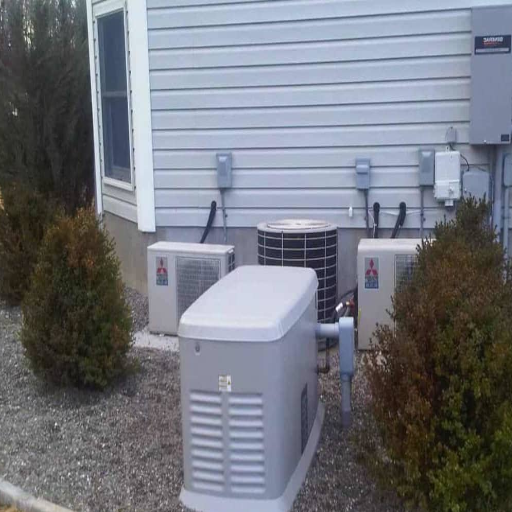
Pros and cons of DIY generator installation
As with any other professional undertaking, there are pros and cons associated with the installation of a generator. As an example, I believe that there can be one major pro, which is that DIY installation permits one to save a lot of money which, in some cases, is wasted during professional installations. Moreover, if you are technically inclined and have a good grasp of mechanical and electrical concepts, do-it-yourself installation can be a fulfilling and productive process. On the contrary, the pitfall is related to the risk the process poses. Installation logic may be dangerously wrong concerning wiring, ventilation, or even equipment damage, and it can be too late before the savings are eaten up by scaling rectifying expenditure.
- Evaluation of Electrical Loads: Ensure the generator’s output level is accurately estimated based on the wattage needed for appliances so that starting and running loads do not exceed set limits.
- Correct Wiring and Earthing: Follow NEC Standards and use the proper gauge of wire specified according to Amperage (AWG wire based on Amperage).
- Fuel Connections: Make clean and tight joints for fuel lines (propane, natural gas, or gasoline) and check for leaks using the approved techniques as specified by NFPA 54 or NFPA 58 standards.
- Ventilation Requirements: Make sure that the location of generator installation is open so that there is no risk of carbon monoxide poisoning in relation to the manufacturer instructions of exhaust clearance.
- Installation of the Transfer Switch: An automatic transfer switch needs to be installed in such a way that guarantees proper sequencing of the generator and the primary power source.
In the end, I would also need to consider my technical capabilities, time, and tools relative to the risks and compliance obligations.
Benefits of hiring a professional generator installer
A professional installer should be hired for the installation of the generator as they can ensure safety and proper operation are observed, especially for the technical complexity of the process. Firstly, experts in the field have a better understanding of local legislations and building codes which minimizes the chances of breaching laws and ensures the installation is done within legal parameters. For instance, they can ensure that the generator’s placement does not violate the National Electrical Code (NEC) concerning its locations of openings or combustible walls which requires generators to be at least 5 feet away from such openings.
- Determination of Load: The calculation of the required output of a generator about its maximum kw output, peak demand, and start-up current of machines that are connected to it.
- Fuel Type Verification: The affirmative check that offers the ability to use either natural gas (pressure requirement 6 to 7 inches of WC) or propane (11 to 14 WC) as a fuel type.
- Conduits and Wiring: Provision of correct wire size and corresponding circuit breaker about the generator’s capacity to not compromise the unit’s safety and efficiency.
- Voltage Supply: Setting the automatic voltage regulator (AVR) to enable the generator to supply power without variances in the output voltage.
- Exhaust Routing: The designing of exhaust systems that limit the danger of carbon monoxide poisoning while complying with emission clearance and routing standards.
Using their expertise mitigates the risks of errors occurring during the installation phase which may include, but are not limited to, erroneous wiring of the transfer switch and incorrect grounding. This level of accuracy is important to me because I could cause a lot of damage if I attempted an install with no prior knowledge. For my particular situation, working with a certified installer is the best and most dependable option.
When it’s best to leave the installation to the experts
In my case, installation should be done by certified professionals when working on a system with dangerous engineering or specialized safety regulations.
- Calculating Electric Loads: Making sure the system can comfortably support my family’s power demand without tripping. There can be errors that either overload the circuits or does nothing at all.
- Configuring Transfer Switches: Correct integration with the main electrical panel is vital to avoid backfeeding which poses a threat to utility workers during a power outage.
- Grounding: Must ensure safety from electrical faults as well as components within the NEC.
- Location and Exhaust: Placement must abide to the recommended clearances which is 5 feet from windows or doors to prevent emissions being obstructed and also guarantee proper airflow.
Because of these factors, I know for a fact that everything will be done flawlessly and accurately with the aid of certified individuals.
What ongoing maintenance is required for my generator?
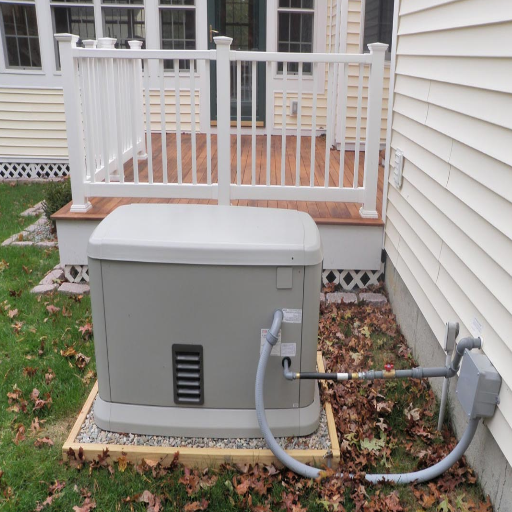
Annual maintenance checklist for home standby generators
To have my home standby generator working efficiently, I must follow some annual maintenance routines:
- Changing Oil and Filter: As prescribed by the manufacturer, the engine oil along with the oil filter should at least be changed after every 100-200 hours or once every year for regular cases. If this step is not taken, there will be an undesirable buildup which can impair engine performance.
- Battery check: Ensure that the terminals of the battery have not been corroded, are properly charged, and check if they are connected properly. The battery must be changed after every 3-5 years or as instructed by the manufacturer for ensure starting efficiency.
- Checking coolant system: Check if the coolant levels need to be topped off and verify the coolant is not overheating. Verification of the coolant mixture ratio, which is typically 50/50 water and coolant, also needs to be done according to the generator’s requirements.
- Replace air filters: Evaluate the air filter for dirt accumulation and when necessary, especially in dusty environments, it should be replaced. This will also be done in a year or along with manufacturer specifications.
- Maintenance of Spark Plug: The spark plugs should be checked for any wear and carbon deposits, and if detected, should be replaced within 200-300 operational hours or as the operator’s manual suggests to achieve proper combustion.
- Checking fuel system: Leaks in the fuel system along with damaged hoses, tanks, and connections should also be checked. If gasoline is being used, it’s beneficial for the user to add a stabilizer in order to prevent degradation of gasoline.
- Exercise Generator: Operating the generator on a weekly or bi-weekly basis will assist with lubrication and prevent components of the system from becoming static. I take precautions to ensure that the load is always under the generator’s rated capacity.
- Load Bank Testing: Perform load bank testing for commonly used or relied upon units on an annual basis. Assess the generator’s ability to perform under peak loads while also mitigating carbon build-up in the engine.
- Inspection of Transfer Switch: The automatic transfer switch should be tested to guarantee proper and secure transitions from utility power to generator power and vice versa. Check the skeleton connections and ensure the switch comes with a rated response current.
- Exhaust System Review: Review the exhaust leaks, damage, or blockages to ensure emissions are done safely. Following clearances comes with risk to the area in question.
This checklist guarantees that my generator is functioning at optimum productivity, while also prolonging its life expectancy.
How to find reliable generator maintenance services
The identification of credible generator maintenance services has to be specialized around their credentials, experience, and skills. The very first step of the verification process is determining if the service provider has accreditation from any relevant authority or manufacturer, which will establish that they have the requisite competencies to deal with the specific model of the generator.
- The range of services offered: Ascertain that the provider carries out oil and filter change, electrical system checkup, coolant replacement, and load bank testing, among other maintenance services. Ensure that the operations checklist corresponds with the generators operational requirements.
- Response Time: For breakdown services, determine their response time and confirm that it is within 24 hours for emergency situations.
- Capability to perform detailed diagnostics: Confirm that the service provider employs advanced diagnostic equipment monitor the frequency (50/60 Hz), voltage output, and the power supplied to the generator against its rating.
- Compliance Knowledge: Ascertain that the provider knows the local codes and emission compliance standards which means the exhaust system and other components from the service provider do not violate set regulations.
- Warranty Support: Ensure that the maintenance service providers do not void the warranty by failing to comply with prescribed terms.
- Flexibility of the Schedule: Evaluate their capacity for performing scheduled custodial preventative maintenance in alignment with runtime hours and fuel consumption or demand of the generator. For instance, oil changes are normally necessary every 100-250 hours of operation, based on the type of generator.
By carefully evaluating these factors coupled with due diligence, users can identify a service provider that guarantees optimal safety, performance, and compliance with regulations for the generator.
Tips for extending the life of your generator
Regular Maintenance: Checking the generator’s oil and filter change is suggested to be conducted every 100 to 250 hours during operations, and I follow the manufacturer’s recommendation. The exact values of this range depend on the generator’s model and workload. I also check the air filters for proper airflow and clean them if necessary after every 500 hours of operation.
- Load Management: In order to avoid generator inefficiencies and wear over time, I restrict the operation of my generator to its rated capacity of 50-75%. If my generator is run at 30-40% of its maximum capacity for a prolonged period, it could lead to wet stacking. If it is driven above capacity consistently for too long, it could damage internal parts.
- Fuel Quality Control: Diesel or gasoline fuel contamination is easily avoided as long as proper containers that do not allow moisture access are used while more long-term storage requires stabilizers and periodically performed fuel polishing. Particularly for diesel, if the storage length exceeds a year, then fuel polishing needs to be done periodically.
- Battery and Starter Testing: Starter testing and checking battery voltage or connections is something I conduct regularly. For starter maintenance, I clean the terminals, check the battery connections, and ensure the prescribed limits of electrolytes for wet-cell batteries are maintained.
- Environmental Conditions: While using the generator, I make sure there is sufficient airflow to maintain proper ventilation, as well as keep the temperature under control, through positioning. Hence, I ensure that the intake air remains above the maximum acceptable level of ambient air as stipulated in the manuals, which is normally roughly 40 degrees Celsius or 104 degrees Fahrenheit for most generators so that overheating does not occur.
- Routine Load Bank Testing: For generators that are typically used as a backup, I normally do load bank tests every half a year to a year. These tests perform some operating loads to alleviate built-up carbon deposits and check that the system is still responsive to load.
If I implement such policies, the technical measures, I am sure that I will be able to improve the operational life of the generator economically without affecting productivity and dependability.
Are there any special considerations for generator installation during home remodels?
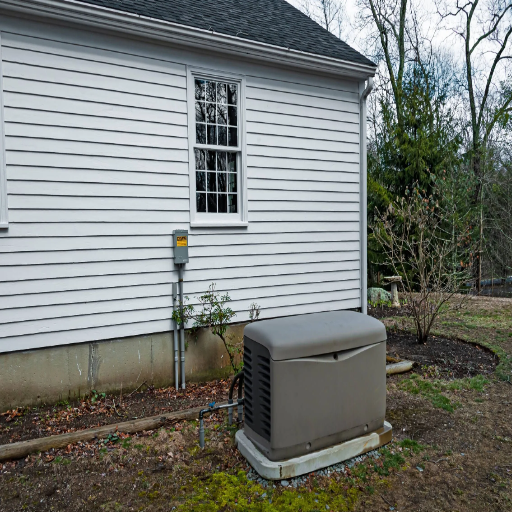
Integrating generator installation with other electrical work
While combining new generator work with other forms of electrical installation in a remodel scenario, I make sure to check and plan for the main electrical system’s limits and needs. To begin, I perform a detailed load analysis to estimate the likely power needs of the house and decide on the generator size as it relates to starting and running watts for critical appliances and HVAC systems.
Furthermore, I establish the locations where transfer switches will be located along with other circuits. For locations where there is no need for manual control, I incorporate automatic transfer switches (ATS). For the ATS, I ensure that it works with the generator and main electrical panel. As an example, I make sure that the voltage rating of the ATS is compatible with the home’s electrical system which most of the time is 120/240V for US residential buildings.
In addition, I devise plans that contain methodical consideration of circuit wiring structures that exist above them. Safeguards against local building regulations, the National Electric Code (NEC), and required generator distances must be observed. As an example, I make sure that there is at least 5 ft clearance around windows, doors, or vents to assure safety and proper ventilation.
Coordinating generator installation with your remodeling timeline
In order to ensure no delays with the remodeling and installation of a generator, I make sure to stay ahead of the construction timeline by completing all electrical work prior to the start date. In this case, I arrange for walls to be framed and the primary structural systems to be built well ahead of the time when wiring and Generator installation will be handled. This will ensure compliance and make integration smooth.
- Voltage Compatibility: Check if the generator’s output volts 120/240V as in residential U.S. properties, correspond with the remodeled electrical system.
- Power Load Assessment: Analyze the load estimate relative to the new appliances or systems that would be installed during remodeling to ensure the estimate is equal to or less than the generator’s capacity.
- Clearance Requirements: Observe proper generator placed clearances which is 5 feet from windows, doors, vents, and other combustibles according to the NEC.
- Transfer Switch Integration: Install the automatic transfer switch ATS during remodeling, so there can be effortless changes between grid power and backup power.
This approach enhances security and compliance while improving system efficiency and minimizing disruption.
Reference sources
Frequently Asked Questions (FAQs)
Q: What is the average cost to install a whole-house generator?
A: The cost to install a whole-house generator can vary widely depending on factors such as size, brand, and installation complexity. On average, you can expect to pay between $5,000 and $15,000 for a complete installation. For more accurate pricing, it’s best to get free estimates from local generator installers.
Q: How do I determine the right size generator for my home?
A: To determine the right size generator for your home, consider your power needs during an outage. Calculate the wattage of essential appliances and systems you want to run simultaneously. A professional electrician or generator installer can help you find the right size generator that fits your needs, whether it’s a portable generator or a whole home generator.
Q: Are portable generators a good alternative to whole-house generators?
A: Portable generators can be a good alternative for some homeowners, depending on their needs. They are less expensive and more flexible than whole house generators. However, they have limited power output and require manual setup during outages. Whole house generators offer automatic power restoration and can power your entire home, making them a more convenient option for long-term backup power.
Q: Do I need to hire an electrician to install a generator?
A: Yes, it’s highly recommended to hire a licensed electrician or a professional generator installation company to install your generator. They have the expertise to ensure proper connection to your home’s electrical system, comply with local codes, and set up fuel lines if necessary. This ensures the safe and efficient operation of your generator.
Q: Can the same company that installs my generator also provide maintenance?
A: Many generator installation companies also offer maintenance services. It’s beneficial to choose a company that can provide both installation and ongoing maintenance, as they will be familiar with your specific setup. Regular maintenance is crucial for ensuring your generator’s reliability and longevity, whether it’s a portable generator or a whole house system.
Q: Are there any additional services I should consider when installing a generator?
A: When installing a generator, you might want to consider additional services such as solar battery storage or EV chargers. Some companies that install generators also offer these complementary services. Combining a generator with solar battery storage can provide a more comprehensive backup power solution for your home.



